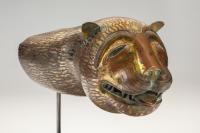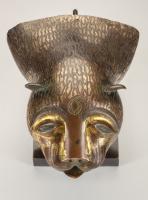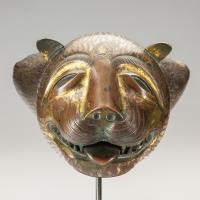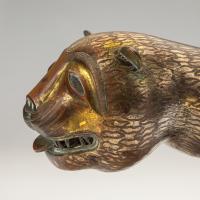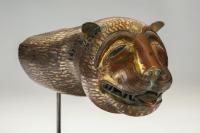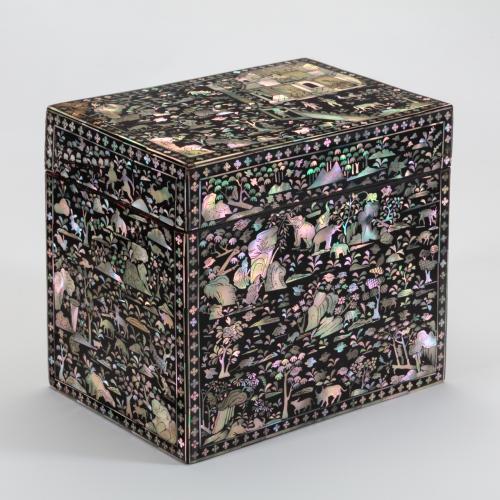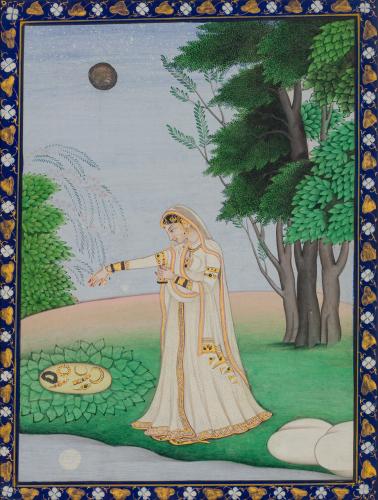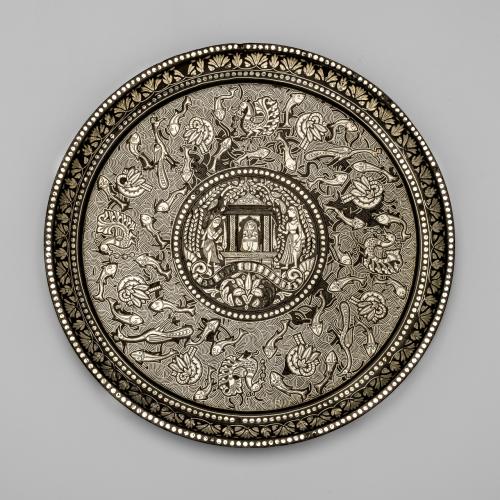
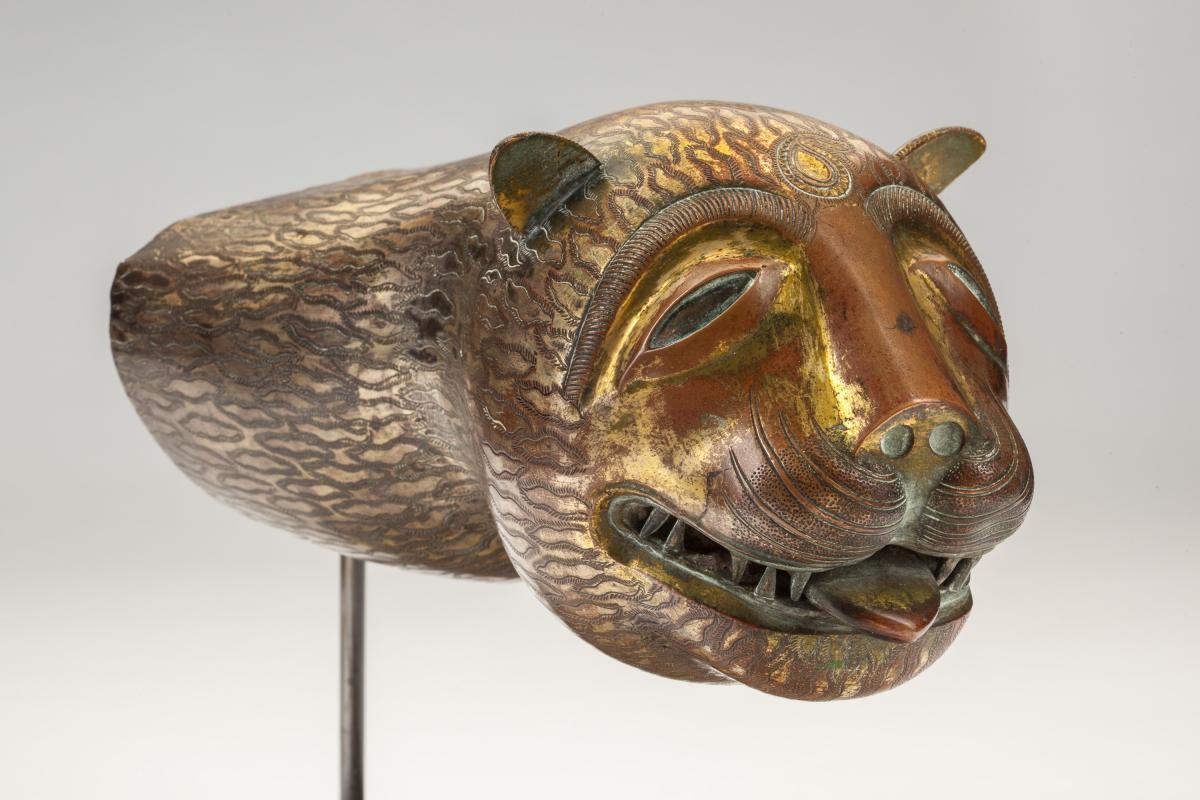
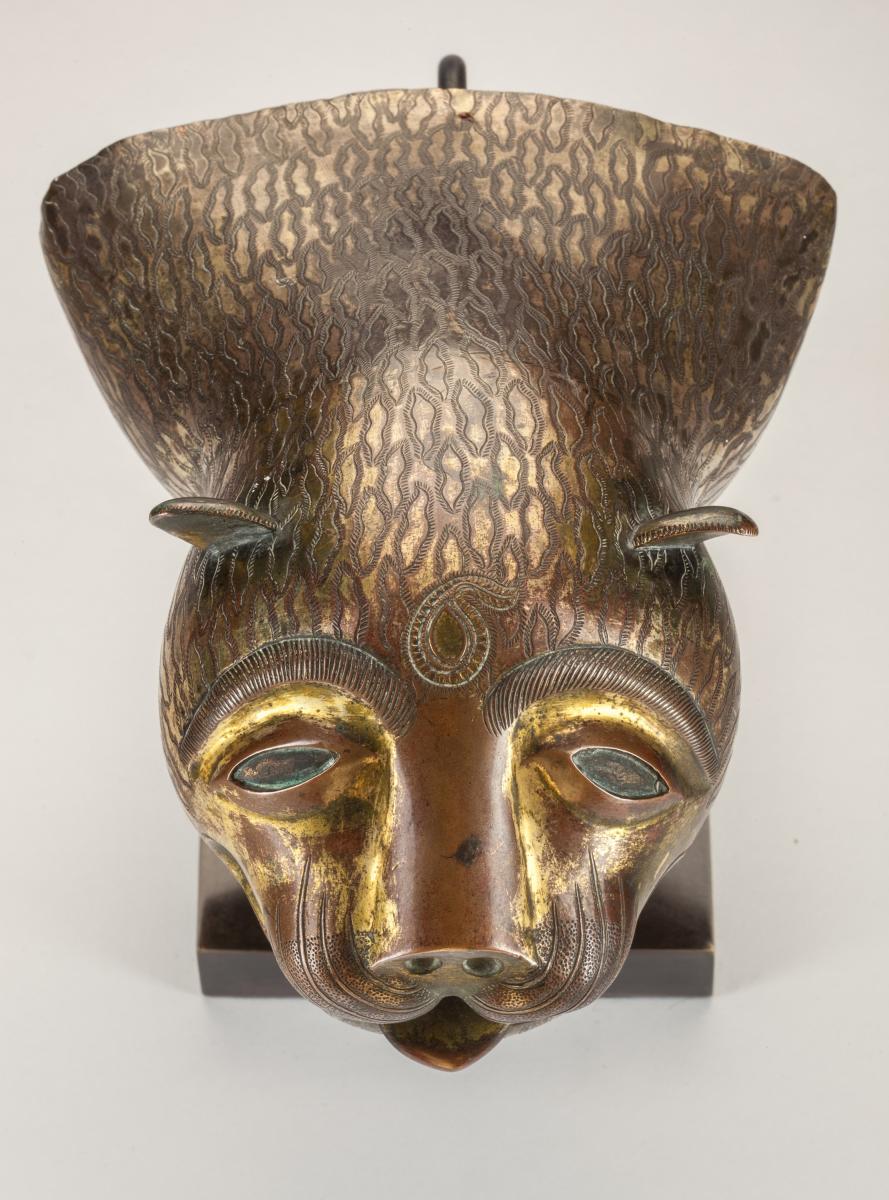
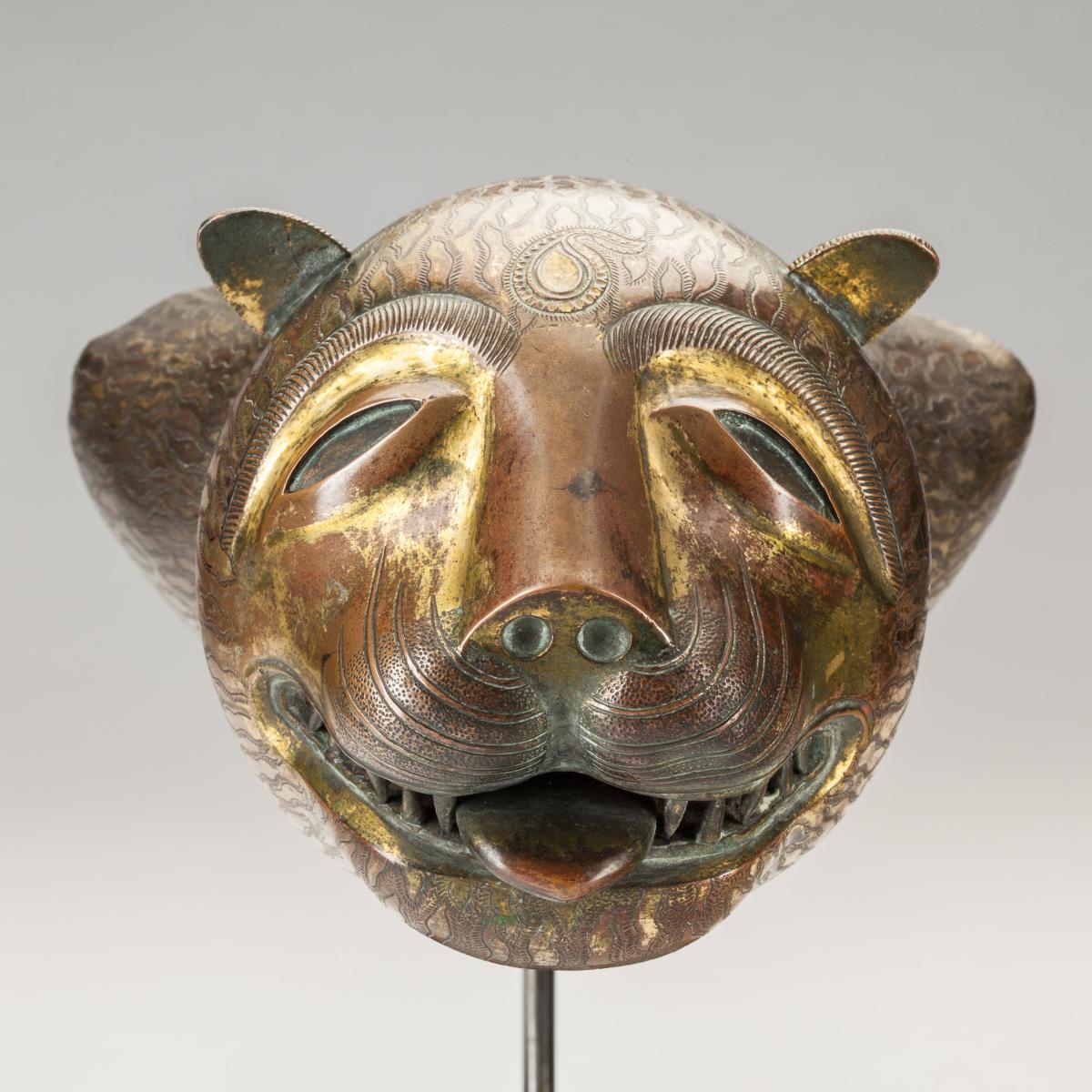
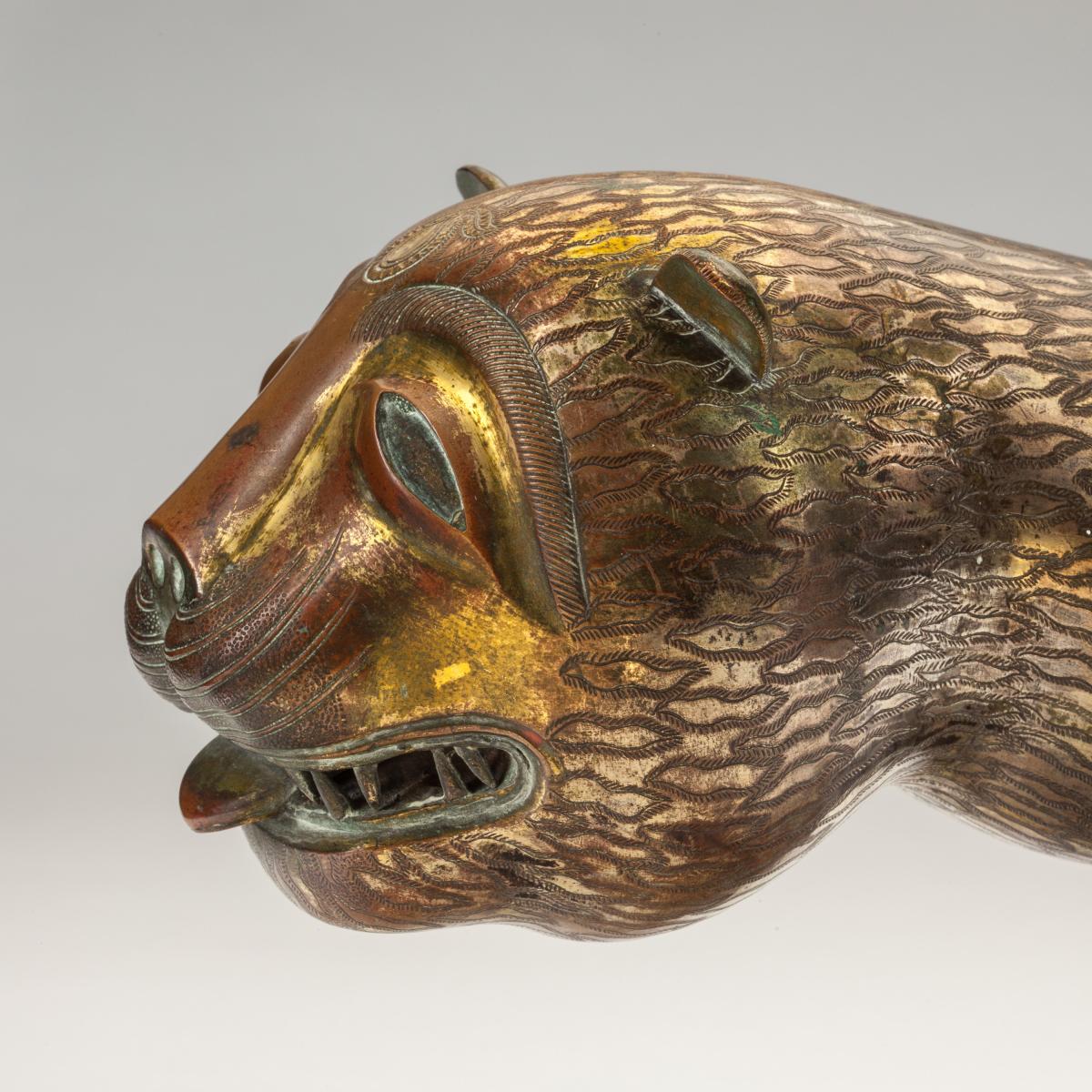
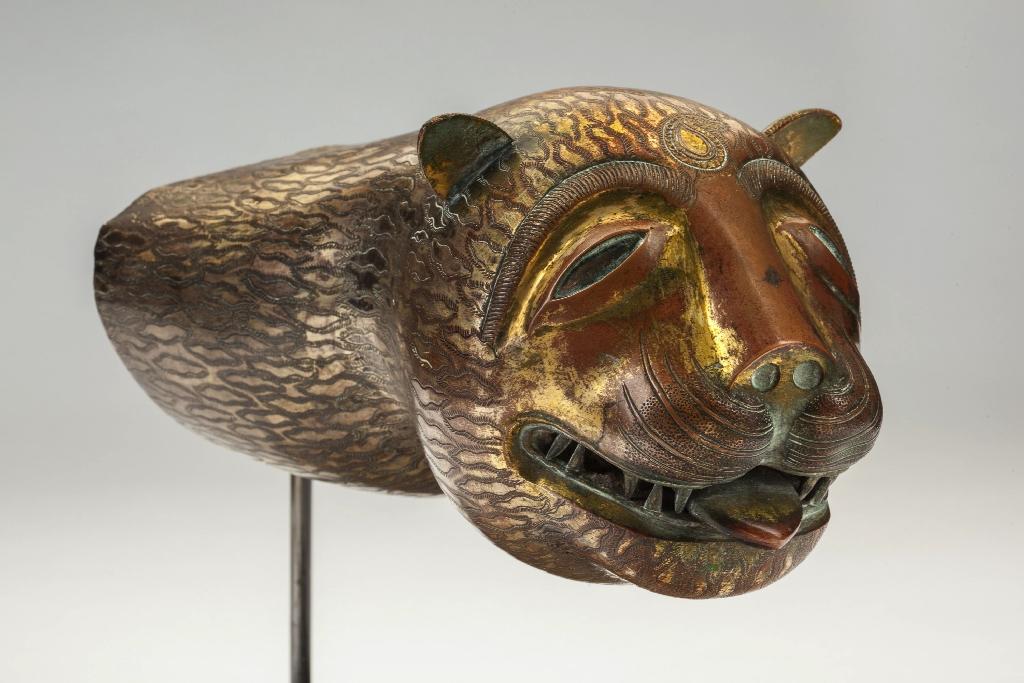
Price on application
This object is eligible for a Certificate of BADA Provenance
The BADA Standard
- Since 1918, BADA has been the leading association for the antiques and fine art trade
- Members are elected for their knowledge, integrity and quality of stock
- Our clients are protected by BADA’s code of conduct
- Our dealers’ membership is reviewed and renewed annually
- Bada.org is a non-profit site: clients deal directly with members and they pay no hidden fees
Tiger Palanquin Ornament.
India, 18th century.
Kingdom of Mysore.
20cm long.
This hollow gilt-copper head of a tiger was most probably the finial for an elaborately decorated palanquin. Originally it would have been covered with gilt decoration and the eyes most probably inlaid with semi-precious stones. On the forehead of the tiger, there appears a boteh motif. The tiger has its mouth slightly open with its tongue protruding through ferocious teeth. Many members of Indian royalty used tigers as a symbol of power and the iconography of tigers appears on many royal objects. The most prolific iconographic depiction of tigers was by the court of Tipu Sultan (1750-1799), also referred to as The Tiger of Mysore. He used the tiger emblem on his weaponry and royal regalia including his throne. There are distinct similarities between the tiger motif used in Srirangapatna and this tiger head - including the depiction of the tiger’s facial features and the bubri motif engraved on its body.
The BADA Standard
- Since 1918, BADA has been the leading association for the antiques and fine art trade
- Members are elected for their knowledge, integrity and quality of stock
- Our clients are protected by BADA’s code of conduct
- Our dealers’ membership is reviewed and renewed annually
- Bada.org is a non-profit site: clients deal directly with members and they pay no hidden fees


